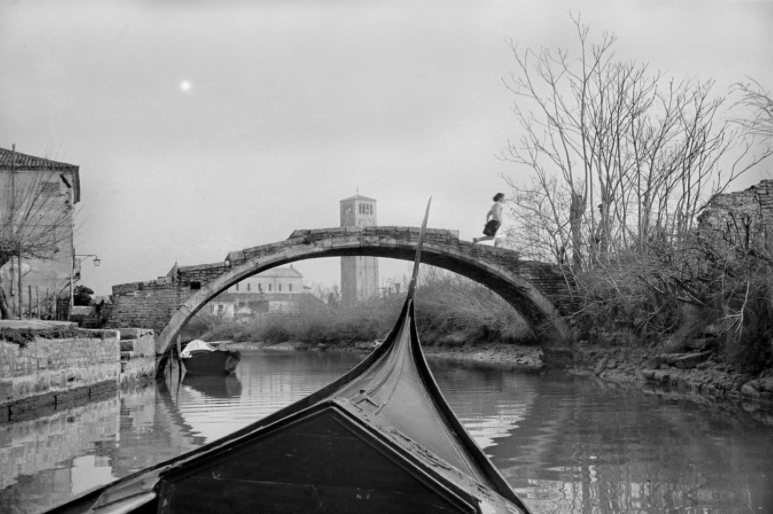Henri Cartier-Bresson
I chose to study Henri Cartier Bresson's photography work because I really enjoy looking at it. Despite the fact hat he is known for his street photography, and most of his images are in black-and-white, and so he doesn't focus on the formal elements, I like his photography and I can definitely see some formal elements portrayed within his work, such as movement, depth, line, tone and shape. The black-and-white style enhances these elements within his images and makes them look far more visible. Cartier-Bresson is known to be the father of photo-journalism, and alongside his photography he is also a painter.
One of the main reasons i like this image is because everything is in focus and still, apart from the cyclist on the pavement. Obviously he is cycling past and therefore moving, which makes him blurred in the image. I also like how Henri Cartier-Bresson has taken this image from above, so we are able to see the staircase he's standing on as well as most of the street. This photo is black-and-white and therefore shows the tone of the colours within the image, which makes the cyclist the darkest subject in the photo, emphasising him as the main focal point.
This photo interests me because it is so ordinary, yet the way it has been taken makes it look extraordinary. In this image we can see an alleyway with a man sitting on the street at the end of it. We can only slightly see past the alleyway, but there are only more buildings. This image shows depth because the walls of the alleyway become narrower as the lead up to the street (and background of the image) where the man is sitting.
This photo caught my eye because of how many shapes there are, such as the arch and semi-circle shape of the bridge, as well as the extremely pointy triangle at the end of the boat, and the squares and rectangles in the distance which make up the buildings on the side of the lake. I like this image because it makes the viewers feel as though they are on the boat, and on the same journey. I also like that the photo has been taken from one end of the boat, and so makes the boat look quite wide, and then shows the pointy, narrow end of the boat.
This photo clearly shows shape which is why i chose it. However, i also like that there is depth shown. There is children on each part of the swirl (which i'm assuming is a staircase) and so the ones closest look like they have bigger heads in comparison to the ones further away. I also like how the depth of this image makes the photo look as though it leads to somewhere or something, or as if it is moving and spiralling away.
Henri Cartier-Bresson has influenced me to tae more black-and-white photographs to show tone within my images, as well as to focus on tiny details within an image that i'm taking. I also like that Cartier-Bresson uses unstated, street photography as his focus, as this means that the photos are natural and truly realistic. This has influenced me to take more photographs outside and to challenge myself to take photographs of people and objects without staging, posing or moving them. In many of Cartier-Bresson's work, he has shown movement, this is through people walking past or riding their bike in the street etc. As Cartier-Bresson's work is mostly unstaged street photography, I think the movement portrayed, really emphasises the realism of the image. I would like to use this style and effect within my own photography.
This is one of my photos from the 'Movement' shoot. Clearly, we can see that I'm the one moving the camera, as there are no other people in the image, the movement has come from the camera, which is is shown from the blur in the image. Just as Cartier-Bresson shows in his images of other people moving, he influenced the idea of also showing myself moving in photos too.
During the 'Studio Mapplethorpe Portraits' shoot, I decided to let the model do whatever they like, and shot photographs when i pleased. This is one of the images that I took, it is completely unstaged as i had very little say in what the model was doing. This is portrayed through the model's smile and expression.
In summary, I believe Cartier-Bresson's work is a perfect example of the formal elements because it is almost as though he captures them by accident. I also like his style of street photography and the effect black-and-white gives to his images.






No comments:
Post a Comment